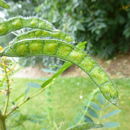en
names in breadcrumbs


Senna hebecarpa, with the common names American senna[3] and wild senna, is a species of legume native to eastern North America.[2][1][4] [5]
Senna hebecarpa grows as a sparsely branched perennial plant. It has alternate, compound leaves.[6]
Clusters of light yellow to orange flowers bloom from July to August in North America.[6]
The plant is found from the Great Lakes region and Maine southwards through the Eastern United States, in the Appalachian Mountains and Atlantic Plains, to Georgia.[2][7]
It is found in moist open woodlands, and in disturbed areas.[7]
It is a larval host and nectar source for the Cloudless Giant Sulphur (Phoebis sennae) butterfly.[6] It is also of special value to native bumble bees.[6] [8]
It is endangered in Massachusetts and New Hampshire, threatened in Vermont, as historical in Rhode Island,[9] and as threatened in Connecticut.[10]
Senna hebecarpa is cultivated as an ornamental plant, for use as a perennial wildflower and flowering shrub in traditional and wildlife gardens, in natural landscaping projects, and for habitat restoration projects.[6][4][5]
The Cherokee use an infusion of the plant for various purposes, including taking it for cramps, heart trouble, giving it to children and adults as a purgative and for fever, and taking it for 'blacks' (hands and eye sockets turn black). They also give an infusion of the root specifically to children for fever. They use a poultice the root for sores, and they use a compound infusion for fainting spells. They also use a compound for pneumonia.[11] The Iroquois use the plant as a worm remedy and take a compound decoction as a laxative.[12]
Senna hebecarpa, with the common names American senna and wild senna, is a species of legume native to eastern North America.